mobile View, to the German Version tap the flag
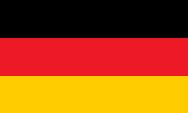

- Moravia
- former Austrian crown land: Margraviate of Moravia
- nowadays countryside in the east of Czechia
• Flag
• Meaning/Origin of the Flag
• Coat of Arms
• Meaning/Origin of the Coat of Arms
• Map of the former crown lands of Austria-Hungary (to 1918)
• Numbers and Facts
• History
• Origin of the Country's Name
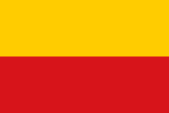
Flag of the country (Colours of the country),
ratio = 2:3,
Source, by:
Flags of the World



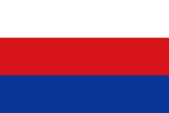
Colours of the Slavs in Moravia (Moravians),
ratio = 2:3,
Source, by:
Flaggen und Wappen der Welt





The country had – like all the other crown lands of the Austrian crown – its own colours (Landesfarben), which were used amongst others on horizontally two- or three-striped flags. The colours (Landesfarben) were very often taken from the respective coat of arms of the country or were supplemented by another colour, which not appears in the coat of arms, or they went back to older models of the coat of arms (e.g. Carniola). Officially, the colours had never been regulated or stipulated, so that their sequence varied in practice or even the colors deviated. The Austrian heraldist Hugo Gerard Ströhl (1851–1919) was probably the first to take care of it and asked for the colors (Landesfarben) on the flags at the respective state authorities around 1890 and compiled them. Moravia used as colours of the country a flag which showed two horizontal stripes in gold and red. The colours descend from the coat of arms of Moravia: an eagle in golden an red chessboard pattern with a golden crown and golden arms on a blue shield.
Source: Österreichisch-Ungarische Wappenrolle,
Flags of the World,
Volker Preuß


to 1462,
Coat of arms of the Margraviate of Moravia
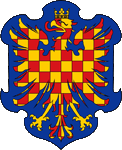
Escutcheon of the Margraviate of Moravia,
Source, by: Österreichisch-Ungarische Wappenrolle
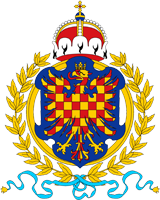
ca.1890–1918,
Coat of arms of the Margraviate of Moravia,
Source, by: Ströhl, Wappenrolle Österreich-Ungarns, 1890, via Wikipedia (D)

1920–1939, 1945–1960,
Middle coat of arms of Czechoslovakia,
Source, by:
See page for author / CC BY-SA

today's Coat of arms of Czechia,
Source, by:
unknown, convert to SVG Tlusťa / Public domain

today's heraldry of Moravia,
Source, by:
unknown, convert to SVG Tlusťa / Public domain

The coat of arms of Moravia shows an eagle in golden an red chessboard pattern with a golden crown and golden arms on a blue shield. The eagle was initially in white and red chessboard-patterned. That colours are possibly of Slavic origin and go leastways back to the old Margraviate of Moravia, if not actually until the Great Moravian Empire. The Habsburg Emperor of the Holy Roman Empire of German Nation changed the colours of the eagle in gold and red (the colours of the House of Habsburg) in 1462, indeed to underscore his claims for Moravia. As an Habsburg crown land the coat of arms of the country always showed above a duke's hat, although it never was a duchy. Therefore, in the 19th century it was seted, that the crowning of the coat of arms should stay visually unchanged, but be addressed as a princely hat. The Austrian heraldist Hugo Gerard Ströhl surrounded the coat of arms ca. 1890, in its last known version, with a wreath. After the end of the reign of the Habsburgs (1526 to 1918) they began to depict the eagle in white and red chessboard pattern again, probably to give it in context with the blue shield a more Slavic look (blue-white-red = Pan-Slavic Colours). The heraldry of Moravia appeared still until 1960 in the coat of arms of Czechoslovakia. Since 1992 appears the eagle again in the coat of arms of Czechia.
Source: Österreichisch-Ungarische Wappenrolle,
Wikipedia (D),
Volker Preuß

Map ca. 1910:
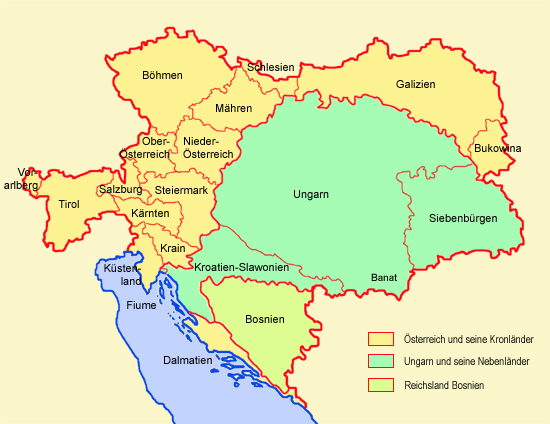
Source: Volker Preuß

Area: 8.584 square miles
Inhabitants: 2.622.000 (1910), thereof 72% Czech and Moravians, 28% Germans
Density of Population: 305 inh./sq.mi. (1910)
Capital: Brünn (Czech: Brno), 122.700 Ew. (1909), 380.680 Ew. (2019)
Languages: Tschechisch, Deutsch
Currency: to 1918 Austrian currency, since 1918 Czechoslovak currency, since 1939 Czech currency, since 1945 Czechoslovak currency, since 1992 Czech currency
Time Zone: GMT + 1 h
Source:
Wikipedia (D)

1st century B.C. · settlement by Teutonic tribes: Quades, Rugians, Heruls, Langobards
6th century · settlement of the area between Danube River and Maraha River by Slavic tribes, later named Moravians
ca. 620 · the Frank Samo unites the Slavic nations of the Sorbs, Croats, Doudlebs, Czech, Moravians and Slovaks and stops the advance of the Awars, the "Samo Empire" (today’s Saxony, Bohemia, Moravia, Western Slovakia) exists until his death and disintegrates then in the particular tribes again
7th/8th century · establishment of an Moravian principality in the area of the today’s Slovakia and the today’s Moravia under Mojmir I., however recognition of supremacy of the Frankish Empire
9th century · Ratislav, Prince of the Moravians, expands the Moravian Empire by the territories of the today’s Hungary, Silesia and Western Galicia, Ratislav crowns itself to the king, attempts to terminate the supremacy of the Frankish Empire, Ratislav designates its nephew Svatopluk to copartner regent
870 · Svatopluk arrests King Ratislav and extradites him to the Franks, Svatopluk becomes Frankish Duke of Moravia
871 · Svatopluk is prosecuted by the Franks because of unfaithfulness and becomes apprehended, because of that riotings under the leadership of Sklagamar Priest, Svatopluk becomes released and reappointed as Duke, but Svatopluk becomes a traitor and exterminates a Frankish army
874 · Empire's Conference (Reichstag) in Forchheim, the Frankish King Ludwig recognizes in return for an oath of loyalty Svatopluk as Duke of Moravia
ca. 880 · Svatopluk submits the Czech in Bohemia and expands its power to the today’s Saxony
892 · Svatopluk denys the Frankish King the loyalty, campaigns of the Franks and Hungarians against the Great Moravian Empire
894 · death of King Svatopluk, conflicts between its sons Mojmir II. and Svatopluk II., the Czech become independent from Moravia and come under Frankish supremacy, the Hungarians conquer the whole east of the Great Moravian Empire, the country shrinks to its today’s size
1002 · Boleslaw III, Duke of Bohemia, conquers Moravia
1003 · Boleslaw Chrobry, The Duke of Poland, invades Bohemia and seizes Bohemia and Moravia
1029 · Bretislaw I. , son of the Bohemian Duke Udalrich conquers Moravia back, the sons of the Duke of Bohemia are prospective the Dukes of Moravia
1055 · death of Duke Bretislaw I., brother wars
1182 · Conrad of Znaim, son of Bretislaw I., earns Moravia as margraviate from the German Emperor Frederick I. as fiefdom, civil war
6th of December 1197 · constitution of the Margraviate of Moravia as Margraviate of Bohemia
1310 · the House of Luxemburg earns Bohemia and in this way the Margraviate of Moravia
1419 · the King of Hungary inherits Moravia
1526 · the House of Habsburg earns Bohemia and in this way the Margraviate of Moravia
1848/1849 · revolution in Vienna, Franz Joseph I. of Habsburg becomes new Emperor, new constitution: the titular hereditary territories of the Habsburgs in the Austrian Empire become converted to crown lands with their own Landtag (parliament), Moravia becomes in this way a crown land of the Austrian Empire, the Duchy of Silesia becomes separated and an own crown land
28th of October 1918 · Czechoslovakia separates from Austria-Hungary (on 10th of September 1919 recognized by Austria), Moravia becomes in this way incorporated in Czechoslovakia
10th of October 1938 · Munich Agreement, Czechoslovakia has to cede all the in majority by Germans inhabited territories – and in this way parts of Moravia – to the German Empire, these become summarized with other territories in the Gau of Sudetenland
15th of March 1939 · march in of German troops in Prague, the Czechoslovakia becomes dissolved, Slovakia becomes an own state, the remaining regions become the "Reichs Protectorate of Bohemia and Moravia"
1945 · soviet conquest and occupation of Moravia, re-incorporation to Czechoslovakia, expulsion of the largest part of the in the country remained German population
1992 · disintegration of Czechoslovakia in Czechia (Bohemia, Moravia and former Austrian Silesia) and Slovakia
Source:
Atlas zur Geschichte,
Wikipedia (D),
RetroBib Retrobibliothek,
Discovery '97,
Volker Preuß

The name "Moravia" is of Slavic origin and has its roots in the "March River", which flows near Pressburg in the Danube River. In ancient times that river was named "Maraha" and the land he flows through "Marahania". In this way became the residents of that land "Marahans" which were named afterward "Maehren", "Moravians" or "Moravci". The "March River" is named in the today’s Czech language "Morava", like the name of the country "Moravia" which is named in Czech language "Morava" too.
Source:
Meyers Konversationslexikon,
Volker Preuß

Further Austria pages (historical flags and coats of arms):
• Empire of the Austrian Habsburgs (to 1804)
• Empire of Austria (1814–1867)
• Austria-Hungary (1867–1918)
• Republic of Austria (since 1918)

![]()














